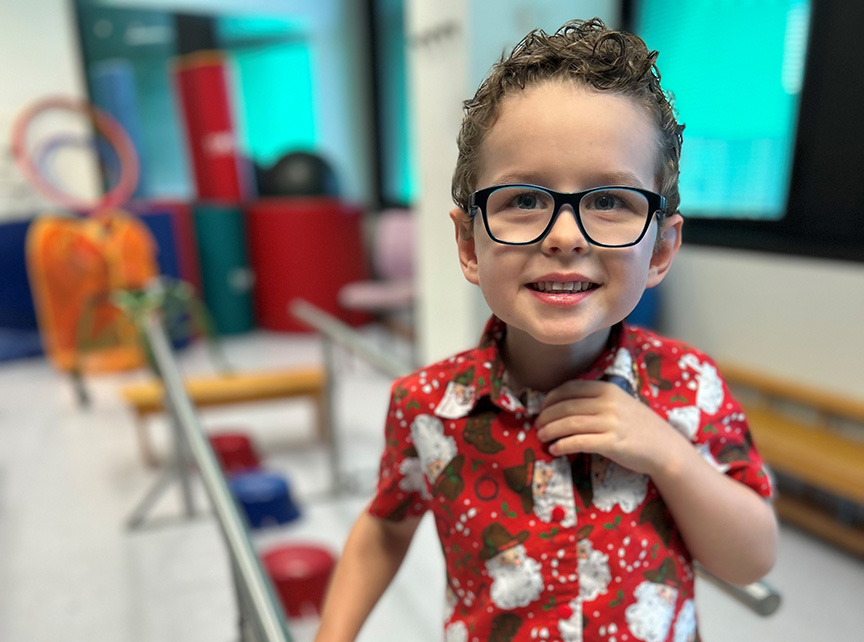
Children born with the most common physical disability are being offered less painful treatment options through a new surgical technique at the Queensland Children’s Hospital (QCH).
One in 700 Australian children are diagnosed each year with cerebral palsy (CP); the most common physical disability in kids.
Over the past decade, more than 2,000 children with CP have been treated by the Queensland Paediatric Rehabilitation Service (QPRS), since the QCH opened its doors in 2014.
All 2,259 CP cases have varied in severity, and the impact it has on the child’s movement.
Jordan King from Townsville was diagnosed with cerebral palsy at the age of one.
In 2023, he became the first child in the state to undergo a new surgery technique, to reduce his spasticity symptoms.
“Jordan was the first patient at the QCH to have a less invasive SDR (Selective Dorsal Rhizotomy) surgery,” QCH neurosurgeon Norman Ma said.
“The size of the incision at the surgical site of the spine decreased, so there was less dissection of muscular tissue and therefore the procedure is potentially less painful.”
A small number of children in Australia are assessed as suitable for an SDR surgery each year.
“A multi-disciplinary team of specialists work closely with families when determining if their child is a suitable candidate for SDR,” Dr Norman Ma added.
Six-year-old Jordan was one of them, and his mum Ashlee noticed the benefits of the less-invasive procedure, just days after his operation.
“He was waking up at least 10 times a night with cramps and spasms in his legs, just walking in his walker previously was painful for him,” Ashlee said.
“After his surgery, he didn’t wake up at all each night.”
But despite those immediate benefits, recovery has, and continues to be, hard work for Jordan.
For more than six weeks post op, he was undergoing rehab up to three times a day with QPRS physiotherapists at the QCH.
“They made sure Jordan was having fun, while still getting in his physio. He was almost a little bit sad when he became an outpatient,” Ashlee said.
After almost two months, equipment was sent to Townsville for Jordan to continue his intense rehab closer to home alongside his twin-brother Alex who also has CP.
Mum Ashlee added: “This year and moving forward is just as important as the surgery itself, for Jordan to work hard and gain muscle again.”
Six months post op, Jordan has already taken his first independent steps, and is needing his walker and wheelchair less and less.
It’s hoped he’ll have reduced pain and gain more independence as he gets older.
“The surgery is the best thing we ever did, and I’m hoping we’ve been able to buy Jordan many more years of mobility and enhanced his quality of life,” Ashlee said.
An additional less-invasive SDR surgery has been performed at the QCH, since Jordan’s operation, with a third procedure booked for the end of May 2024.